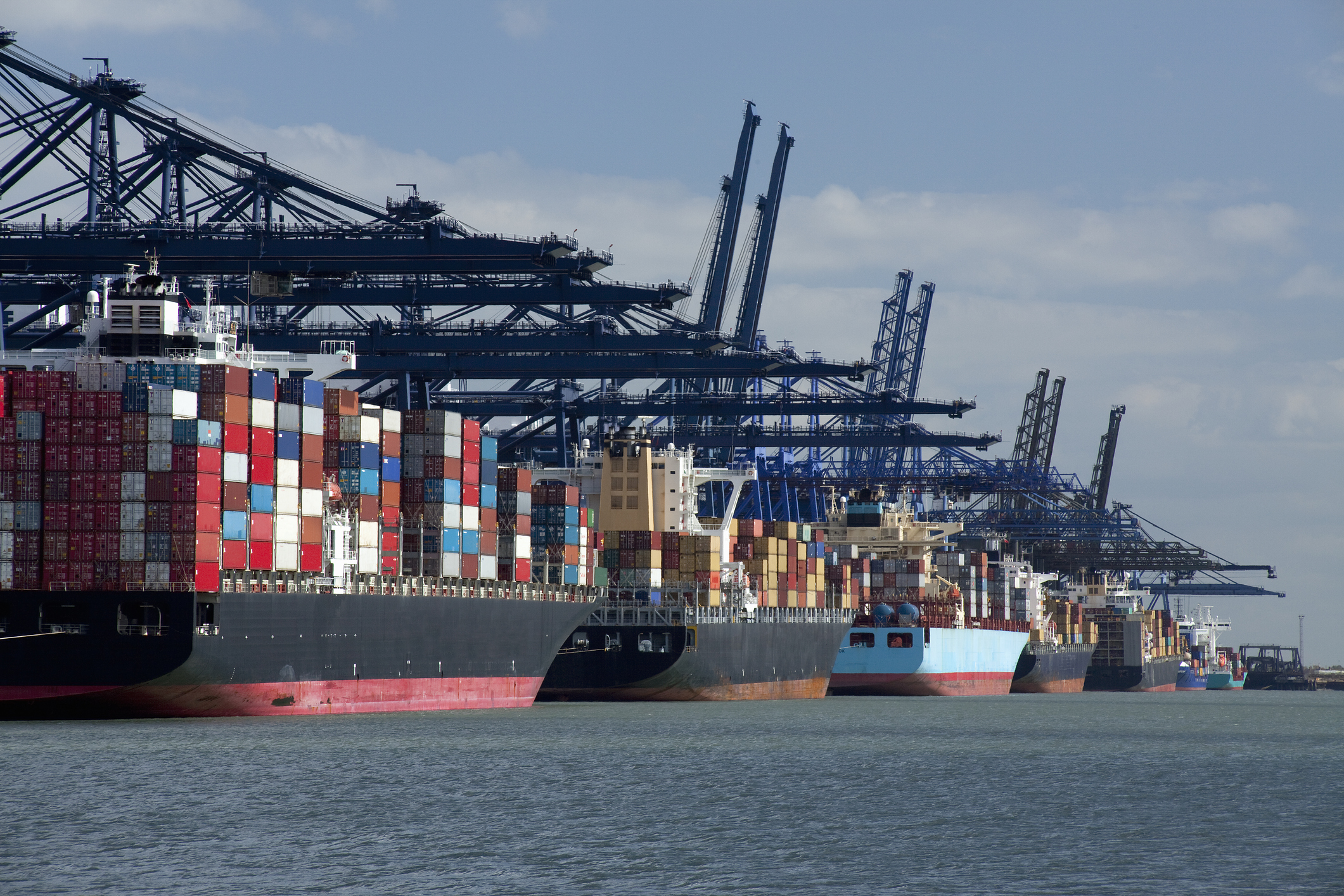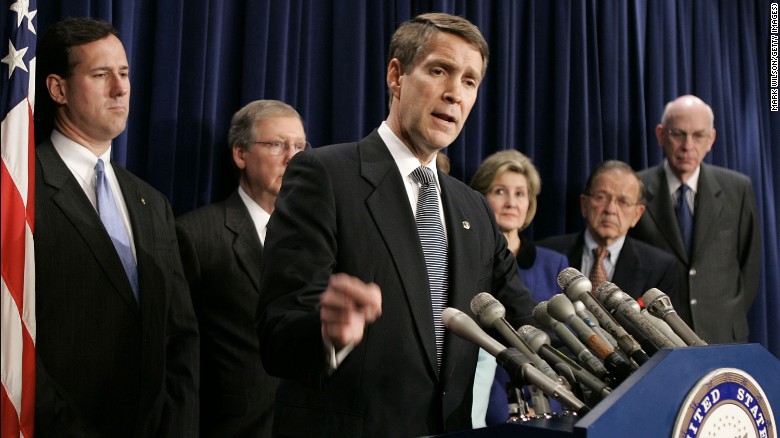The elite war on free enterprise.
Post-Pandemic Blues

The world’s largest transportation providers are suffering from a nasty case of COVID whiplash.
Like a hangover after a bender that went too far for too long, the post-pandemic blues have descended on the transportation and logistics industry. Low interest rates and fiscal stimulus fueled a consumer splurge that lasted for almost two years, tightening transportation capacity and raising rates in all modes, from containerships on the ocean to rail hubs in Chicago and trucks all over the country. Elevated consumer demand and the ensuing high production and shipment volumes required to serve that demand created a stressful environment for manufacturers and retailers. So agile transportation providers that were able to seize the moment achieved strong revenue growth and margin expansion in 2021.
But in the second half of 2022, consumer behavior changed again as growth in the goods trade was hampered by high inflation. Non-asset intermediaries like freight forwarders and brokers conducted mass layoffs; strategic transactions fell through; management teams began tempering expectations.
West Coast container ports had their worst December in ten years for loaded imports as Freightos’ basket of China-to-West-Coast ocean container spot rates crashed from more than $13,000 per forty-foot container to $1,300 per container. Meanwhile on the highway, in the past year, FreightWaves’ National Truckload Index spot rate was slashed from $2.88 per mile, excluding fuel, to $1.82 per mile. A year ago, trucking companies were rejecting 20% of the loads offered to them, exercising maximum optionality in a hot market and putting their trucks where they could fetch the highest rates. But now carriers are hungry for any freight they can get. They reject less than 4% of loads offered to them. And according to the American Association of Railroads, railroad freight volumes are still down 14% compared to pre-pandemic levels in 2019.
The pandemic put the supply chain through a round-trip rollercoaster ride. It placed operational and financial stresses on the transportation industry, running the gamut from acute network imbalances to systemic labor shortages. This whiplash left some of the moribund behemoths shouldering the burden of the global supply chain exposed.
The incumbents are rattled, coming down hard from a sugar high that left them no better off and perhaps even worse for wear than before the pandemic boom time started in 2020. In the end, for some of the most important transportation providers in the world, the pandemic was a wasted opportunity that degraded their workforces and equipment, disrupted their organizations, and tested their balance sheets and customer relationships.
The Parting of the Giants
While the effects of this transporting downturn have been broadly felt, especially by small-time truckers and brokers, two events in particular stand out to me as emblems of large providers’ inability to capitalize on and build from the pandemic boom.
On January 3, North America’s largest third-party logistics provider, C.H. Robinson, a public company that generated $26 billion in gross revenue last year by arranging trucking, ocean container, and air cargo services, fired its CEO Bob Biesterfeld under the recommendation of activist investor Ancora. On January 25, the two largest ocean container lines, Maersk and Mediterranean Shipping Company (MSC), announced that their “2M” alliance would end in 2025.
These two events—an activist investor coup at a dinosauric freight brokerage and a reshuffling of an ocean container shipping mega-alliance—are not directly connected. But they both reflect the pressure and stress the pandemic put on the world’s largest transportation providers. In both cases, a historically unprecedented high-rate, high-volume tailwind created temporary revenue bubbles and earnings windfalls.
In the case of the fallen C.H. Robinson CEO Bob Biesterfeld, the favorable operating environment obscured the fact that Robinson had failed to achieve meaningful productivity gains from its upgraded technology, despite its intention to do so through a five-year, $1 billion tech investment that began in 2019. At the time, that technology investment was necessary to fend off aggressive tech-enabled challengers like Coyote, Uber Freight, Arrive, and Convoy in a hyper-competitive truckload market. In an industry where the margin between what freight brokers sold their services for and what they paid to trucks had been shrinking for years, the name of the game was increasing the number of shipments per broker per day.
During the boom time, Robinson reported their number of truck shipments per broker per day but stopped after the fourth quarter of 2021 when the numbers started turning in the wrong direction. It turned out that despite building better web-based portals for its manufacturer, retailer, and CPG customers, Robinson wasn’t able to leverage its aging database infrastructure fully to enhance the efficiency of its rank-and-file brokers on the floor. Instead, Robinson overhired during the pandemic and middle management swelled.
Another issue at Robinson appeared to be strategic. Robinson is the largest truck brokerage by a wide margin, more than twice the size of its nearest competitor, so it has a harder time taking market share than its competitors. In other words, it’s more difficult for Robinson to grow its volumes faster than the growth rate of the broader market. Yet despite its fundamental situation with respect to the market, Biesterfeld maintained a market share-focused strategy, which led Robinson to pursue small- and medium-size businesses with high acquisition costs, inadequate technology stacks, and low, irregular volumes. This combination equated to a buzzsaw for Robinson’s automation and margin. When the market turned decisively against Robinson—when retailers and manufacturers could find trucking capacity cheaply—the music stopped.
Meanwhile, Ancora Holdings had been building up a position in underperforming Robinson shares. Shortly after Robinson released its disappointing 2022 third quarter earnings miss, Ancora’s stake in the company was worth approximately $200 million. Ancora used the opportunity to force through a layoff of 650 people who made six figures on average. Then, in January, it was Biesterfeld’s turn to go.
Now the rumor on Wall Street, at least according to Jefferies managing director Dan Stratemeier, is that Robinson is considering selling off its Global Forwarding unit to the Danish forwarding giant DSV. Global Forwarding, which handles Robinson’s international ocean and air shipments, is a conglomerate pieced together over years through acquisitions that caught the pandemic wave and rode it, more than doubling its revenue and nearly tripling its profits in 2021. But Global Forwarding is unlikely to repeat its stand-out performance as container rates collapse and ocean alliances break up, with individual containership lines preparing to wage a new round of price wars.
The point here is not that a venerable, 117 year-old company like Robinson is getting unfairly mugged in the street by a bunch of ruthless capitalists. In my view, Ancora is reaping a needful harvest from a lumbering, bloated titan whose ability to adapt to market dynamics, and generate results from tech spend, atrophied during a lost decade.
The broader significance is that some of the most important and sophisticated transportation providers were beaten up by the pandemic and couldn’t turn the temporarily exceptional business climate into long-term momentum. Far from thriving during a period of supply chain chaos, some of these companies left the pandemic with worse prospects than they had when the crisis started.
Breakdown
This doesn’t bode well for the future. Trade as a percentage of global GDP peaked in 2006; COVID and the Russia-Ukraine War have further fragmented—or at least bifurcated—the global economy into more tightly bound regions. In the coming decades, operating global supply chains will become more complex and expensive, raising transportation’s share of the cost of goods sold and adding friction into the economy. Transportation capacity itself—slots on container ships, trucks available for dispatch, railcars—will tighten and loosen more rapidly and unpredictably, and rate cycles are likely to experience higher highs and lower lows.
If the COVID pandemic is our criterion by which to judge the global supply chain’s readiness for a future of increased volatility, complexity, and cost, then we have to be pessimistic about these operators’ resilience. We can expect both deteriorating service and profitability in the future.
The breakup of the 2M alliance between Maersk and Mediterranean Shipping Company, announced January 25, offers us a clue as to how the post-pandemic landscape will develop. For context, ocean container shipping is a fairly consolidated industry: the top four steamship lines have 58% market share when measured by the container capacity of their vessel fleets. The nine largest carriers were further concentrated into three alliances. Maersk and MSC were the two largest steamship lines of them all—Maersk was the largest ocean carrier from 1996 to 2022, when MSC surpassed it. Today, Maersk and MSC both operate approximately 700 containerships each. There are two remaining mega-alliances: OCEAN Alliance, comprised of France’s CMA CGM, China’s COSCO, and Evergreen, out of Taiwan; and the THE Alliance, which includes Germany’s Hapag-Lloyd, Japan’s Ocean Network Express, South Korea’s HMM, and Taiwan’s Yang Ming. The tenth-largest steamship line, ZIM from Israel, is a nimble independent.
The end of the 2M alliance, which officially comes in January 2025, should therefore be understood as the two dominant players in global trade going their separate ways: it’s a big deal. These alliances were conceived during the container shipping meltdown of 2015-6, which also corresponded to a soft trucking market. Just as McKinsey famously predicted in its 1967 report, container lines chased efficiencies of scale, building larger and larger vessels. McKinsey predicted that eventually ships with a capacity of 10,000 twenty-foot equivalent units could be constructed. The seven megaships built by MSC and Evergreen in 2022 each have a capacity exceeding 24,000 twenty-foot equivalent units, the largest cargo vessels ever built.
While this pursuit of megaships drove down the steamship lines’ cost to move an individual container, it also flooded the market with excess capacity, keeping rates at rock-bottom levels. For most of the 21st century, container shipping lines weren’t making any money and in fact were net destroyers of equity value. The 2015-6 trough that saw the creation of the 2M alliance was a soft market in an already bad decade following the Great Financial Crisis of 2008-9, which put the growth of container volumes on a shallower trajectory that was exceeded by the growth in capacity.
The rules governing the alliances or vessel-sharing agreements between steamship lines are fairly simple. In 2M, Maersk and MSC jointly operated fixed weekly “services,” or routes, covering the world’s largest trade lanes, agreeing on the amount of capacity that would be run on each service. For example, last year 2M ran a service called Sequoia or TP3 (Transpacific 3), which involved six vessels, each with capacity between 11,000 and 15,000 TEU, calling at Ningbo and Shanghai, then heading to Los Angeles/Long Beach and back.
Even though the two carriers marketed and sold their services separately and did not set price, in practice they were both held to a market rate. In other words, Maersk and MSC were not setting the price but found themselves selling capacity at approximately the same price as the other in order to fill their vessels—they were held to a market clearing price, in a sense.
Over time, the two carriers’ strategies diverged. MSC was growing fast and, with a war chest flush from 2021 and 2022’s inflated spot rates, it now wants to build even more. It still has an orderbook of 124 vessels with nearly 2 million TEUs in capacity. Maersk, perhaps remembering the painful capacity gluts of prior cycles, has refrained from a building spree and instead has invested in inland logistical services to capture more “end-to-end” value and diversify its offering. In February 2022, Maersk acquired Pilot Freight Services, the important New Jersey-based trucking-focused carrier with dozens of hubs across the U.S., Canada, and Mexico. But later that year, after capital markets became more uncertain, a multibillion dollar deal to buy a top-10 truckload brokerage fell through.
The majority of shipping analysts believe that 2M’s demise will tend to put downward pressure on ocean container rates. The purpose of the alliance, after all, was to limit capacity, drive asset utilization, and create some kind of floor under the rates. MSC’s growing fleet sets the stage for a new race to the bottom on price that will extend and perhaps exacerbate the low-rate environment already starting to set in. The announcement that the alliance will end in 2025—by agreement parties can agree to terminate it with two years’ notice—suggests that Maersk and MSC’s collective response to the new bear market is to double-down on their individual strategies.
The container alliances that were supposed to rationalize capacity, improve efficiency, and allow steamship lines to turn a profit may be starting to crumble under the pressure of poor fundamental economics. As profitability deteriorates, service will likely suffer as well.
What Lies Ahead
What does this mean for the average citizen? In the medium term, if ocean rates and truck rates stay low, some relief on inflation might come. But the long-term damage to the transportation industry, which was caught in a whiplash engineered by federal policy, is more concerning.
The United States doesn’t appear to have a supply chain strategy integrated with its fiscal and monetary policy, so transportation providers are left to their own devices in navigating increasingly unpredictable and violent freight cycles. If their inability to manage a cyclical trend of increasing volatility and complexity translates to less total capacity, the cost of all imports and exports will rise. There’s no reason to think that the ocean carriers—none of the top 20 are American—will prioritize the needs of the U.S. economy or households after repeated market crashes decimate their networks.
If what I’m predicting comes true and the entropic degradation and slowdown of global trade becomes a material reality, consumers who buy imports from distant origins will be exposed to rising cost trends. Local, national, and even North American goods will move more freely relative to global trade, and manufacturing will increasingly reshore. Families who eat seasonal diets will save money. Decades of deflation in consumer electronics may come to an end.
We should be hopeful that ingenuity, high technology, and profit are enough to overcome the obstacles in our way to connecting, partnering, and trading with each other. But there’s no guarantee that our future is on the same trajectory as the recent past. The pandemic set off tremors, stochastic reverberations that are still propagating through the global economy, and supply chain operators are still unready to deal with this new world.
The American Mind presents a range of perspectives. Views are writers’ own and do not necessarily represent those of The Claremont Institute.
The American Mind is a publication of the Claremont Institute, a non-profit 501(c)(3) organization, dedicated to restoring the principles of the American Founding to their rightful, preeminent authority in our national life. Interested in supporting our work? Gifts to the Claremont Institute are tax-deductible.
Their panic continues.
Senator Bill Frist saw it coming years ago.
USAID has embraced gender and sexuality equality as America's key cultural export.
America's fantastic endowment and entrepreneurial spirit maintain its global preeminence.
NatCon London raises unavoidable questions.






